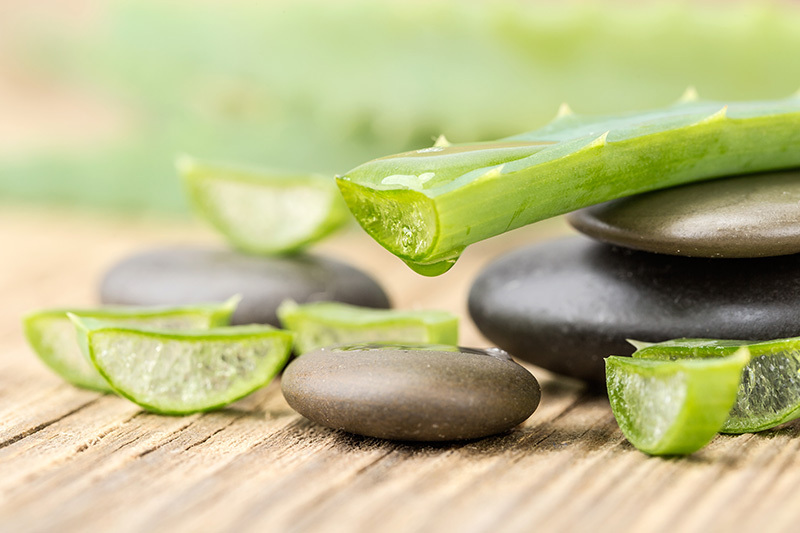Tips and Tricks for Keeping Cut Flowers Lively
Posted on 17/08/2025
Tips and Tricks for Keeping Cut Flowers Lively
Bringing fresh cut flowers into your home is a wonderful way to add color, fragrance, and a touch of nature to your living space. However, it can be frustrating when those beautiful blooms wilt and fade sooner than you'd like. Fortunately, with some expert care and know-how, you can make your floral arrangements stay vibrant for much longer. This comprehensive guide will reveal essential tips and tricks for keeping cut flowers lively, ensuring your bouquets stay stunning for days--and even weeks!
Why Do Cut Flowers Wilt Quickly?
Understanding why cut flowers wilt is the first step toward prolonging their life. Once flowers are separated from their parent plant, they lose their primary source of nutrients and water. Environmental factors like room temperature, sunlight, and water cleanliness further affect their freshness.
- Lack of water causes them to wither rapidly.
- Bacteria growth in the vase water leads to blocked stems.
- Exposure to heat and sunlight speeds up the ageing process of flowers.
- Ethylene gas released by certain fruits and flowers accelerates wilting.

The Best Methods to Keep Your Bouquets Fresh
Let's delve into the most effective ways to keep your cut flowers lively for as long as possible. Follow these science-backed techniques to make sure you get the most out of your floral displays.
1. Choose the Freshest Flowers
The longevity of your arrangement starts at the source. Whether buying flowers at a store, market, or cutting them from your garden, always select blooms at their peak freshness.
- Look for firm stems and vibrant, unblemished petals.
- Buds just beginning to open will usually last longer than fully blossomed flowers.
- Avoid flowers with drooping stems or discolored leaves.
2. Prepare Stems Properly
How you cut and condition the stems has a big impact on how long your bouquet will last.
- Always use sharp, clean scissors or pruning shears to avoid crushing stems.
- Cut stems at an angle, about 45 degrees, to increase the surface area for water intake.
- Remove all leaves that will sit below the water line to prevent rot and bacteria buildup.
- For woody stems (hydrangeas, lilacs), gently split or crush the ends for better water absorption.
3. Use Clean Vases and Fresh Water
Bacteria is the enemy of lively flowers! Keeping everything clean is essential for flower longevity.
- Wash vases thoroughly with warm soapy water before use.
- Always fill with fresh, lukewarm water.
- Repeat the process and change the water every 1-2 days.
4. Add Flower Food or Homemade Preservatives
Most professional bouquets come with a small packet of flower food. Don't skip it--it contains nutrients and antibacterial agents. If you don't have any, you can make your own:
- Mix 2 teaspoons of lemon juice, 1 tablespoon sugar, and 1/2 teaspoon household bleach in one quart of water.
- The sugar feeds the flowers, while the acid and bleach inhibit bacterial growth.
5. Trim Stems Regularly
Every couple of days, take the flowers out, trim about half an inch off the stems, and place them back in fresh water. This keeps the stems open and promotes better hydration.
6. Keep Cut Flowers Away From Heat, Sun, and Fruit
Location matters! Where you display your bouquet can make a huge difference.
- Keep arrangements in a cool spot, out of direct sunlight and away from heat sources like radiators and vents.
- Don't place bouquets near ripening fruit or vegetables. They emit ethylene gas, which triggers early aging in cut flowers.
7. Watch the Water Level
Make sure flowers never run out of water. Some flowers, like hydrangeas and tulips, are heavy water drinkers and may need daily top-ups.
Special Techniques for Different Types of Flowers
Not all blooms behave the same. Here are some extra tips and tricks for extending the life of specific cut flowers:
- Roses: Remove guard petals and always recut the stems underwater to prevent air bubbles.
- Tulips: Prefer cooler water and straighter, shallow vases. Move to a cool place at night.
- Daffodils: Release a sap that can be harmful to other flowers--display them alone.
- Sunflowers: Need lots of water and supportive vases due to heavy heads.
- Hydrangeas: Dip cut ends in boiling water for a few seconds to seal in moisture, or submerge entire heads in fresh water for 30 minutes to revive wilted blooms.
- Lilies: Remove pollen-laden stamens to prevent staining and extend bloom life.
Common Myths About Keeping Cut Flowers Fresh
There are plenty of old wives' tales about preserving cut flowers. Here's what the science actually says:
- Pennies in the vase: Coins only help if they're made of copper, which acts as a mild fungicide. Modern pennies often won't make a difference.
- Aspirin or soda: Some people swear by adding these, but flower food or homemade preservatives are more effective.
- Refrigerating your bouquet: This can work, but repeated temperature changes may do more harm than good.
Creative DIY Flower Arrangement Care
Wondering how florists keep their bouquets looking lively? Here are some insider secrets that you can apply at home:
- Spritz the petals lightly with water using a spray bottle for added humidity.
- Support floppy stems by gently inserting a thin chopstick or dowel.
- Try a floral preservative spray available at craft stores for an extra boost of freshness.
- Group flowers by type (delicate vs. hardy) to customize care for each group.
Essential Supplies for Preserving Your Bouquets
- Floral shears or scissors
- Clean vases of varying shapes and sizes
- Flower food packets or homemade preservative ingredients
- Small spray bottle for misting petals
- Watering can or jug for easy refills

Frequently Asked Questions
How Long Should Fresh Cut Flowers Last?
With proper care, most fresh cut flowers will last 7 to 14 days, although some hardy varieties like carnations and chrysanthemums can last up to three weeks.
Can You Revive Wilted Flowers?
Sometimes! If wilting is due to lack of water, trim the stems at an angle and place them in lukewarm water for a few hours. Certain flowers, such as hydrangeas, respond well to full submersion in water.
Should I Use Warm or Cold Water?
Lukewarm water is generally best for most flowers, allowing for faster water uptake. Some blooms, like tulips and bulb flowers, prefer cool water.
Is Sugar Necessary for Bouquets?
Sugar can help as an energy source for cut stems, but it's more important to use a balanced preservative (or a packet of flower food) containing both sugar and anti-bacterial agents.
Conclusion: Make Your Flowers Last Longer
Nothing brightens a room like a vase filled with lively, vibrant flowers. By following these proven tips and tricks for keeping cut flowers lively, you can dramatically extend the fresh appearance of your blooms. Remember: cleanliness, regular stem trimming, the right water, and proper placement are the pillars of floral longevity.
Whether you're arranging a dazzling bouquet for a special occasion or simply bringing the garden indoors, a little extra care goes a long way. Enjoy your fresh cut flowers longer and let their natural beauty lift your spirits every day!
- Choose fresh blooms and trim stems properly
- Keep vases sparkling clean and use flower food
- Change water often and display arrangements away from heat and fruit
- Customize care for different flower types
- Don't be afraid to experiment with homemade preservatives or new techniques!
For more flower care tips and inspiration, bookmark this page and share it with fellow flower enthusiasts. Your bouquets will thank you!








